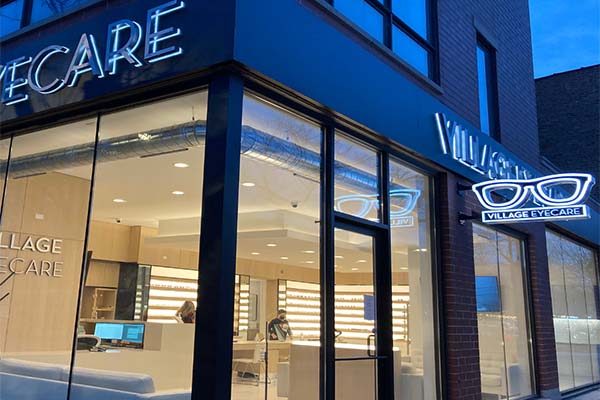Neurologist Andalusia: Expert Neurological and Eye Treatment Services
Neurologist Andalusia: Expert Neurological and Eye Treatment Services
Blog Article
Understanding the Various Vision Adjustment Procedures Available for Clearer View
In the world of vision correction treatments, a plethora of alternatives exist to address refractive mistakes and give people with more clear view. Let's explore the complexities of these procedures and shed light on the course to accomplishing boosted vision clearness (Eye Center Andalusia).
LASIK Surgical Procedure
LASIK surgical procedure is a typical refractive treatment utilized to correct vision problems such as astigmatism, farsightedness, and nearsightedness. This medical technique, which represents Laser-Assisted sitting Keratomileusis, aims to reshape the cornea to improve exactly how light is concentrated on the retina, eventually improving vision quality. Throughout the procedure, a slim flap is produced on the cornea, and a laser is used to get rid of accurate amounts of cells to reshape it properly. This reshaping allows for light to be properly concentrated onto the retina, fixing refractive errors.
One of the key advantages of LASIK surgery is the fast enhancement in vision experienced by people. Several individuals observe a considerable improvement in their vision quickly after the procedure. In addition, most patients report marginal discomfort and discomfort during the surgical procedure and recovery duration. The recovery time for LASIK is reasonably fast, with several people returning to their everyday activities within a day or more post-operation. Generally, LASIK surgery is a prominent choice for individuals looking for a lasting service for their vision issues.
PRK Procedure

PRK is an ideal option for individuals with thin corneas or those at a higher threat of eye injuries, as it does not entail developing a corneal flap. The recuperation procedure for PRK is somewhat longer compared to LASIK, as the epithelium requires time to regenerate. Individuals might experience discomfort and blurry vision for a couple of days complying with the procedure.
In spite of the longer recovery time, PRK can yield exceptional outcomes in vision improvement, making it a valuable choice for those that may not appropriate prospects for LASIK surgical procedure. - Cardiologist Andalusia
Implantable Lenses
In comparison to PRK where the cornea is reshaped directly, implantable lenses provide an additional approach for dealing with vision by placing synthetic lenses inside the eye. This procedure is especially useful for people with high levels of astigmatism, farsightedness, or nearsightedness that may not appropriate prospects for laser surgeries like LASIK or PRK.
Implantable lenses, also called phakic intraocular lenses, work by supplementing the eye's all-natural lens with an artificial one. These lenses can be placed in front of the all-natural lens (former chamber) or behind the iris and before the all-natural lens (posterior chamber) By adjusting the power and positioning of these lenses, ophthalmologists can efficiently fix refractive mistakes and boost visual acuity.
One benefit of implantable lenses is that they are removable and exchangeable, providing flexibility for future adjustments. As with any medical procedure, there are risks entailed, such as infection or cataract formation. Individuals considering implantable lenses must seek advice from with an eye treatment professional Visit This Link to establish the most suitable alternative based upon their specific requirements and eye wellness.
Corneal Rings

The treatment for putting corneal rings is minimally intrusive and relatively fast, often done as an outpatient procedure. During the surgery, the eye doctor makes a little incision in the cornea and inserts the rings at a details depth. When in place, the rings help to reshape the cornea, offering a smoother surface area for light to enter the eye, which can cause more clear vision.
Corneal rings are thought about a relatively easy to fix procedure, as they can be eliminated or replaced if necessary. While they may not entirely eliminate the need for glasses or call lenses, corneal rings can dramatically boost vision quality and overall visual convenience for people with keratoconus or various other corneal abnormalities.
Refractive Lens Exchange
Adhering to the improvement of corneal irregularities with treatments like corneal rings, another vision correction method that can deal with refractive errors is Refractive Lens Exchange (RLE) RLE is a surgery that includes replacing the eye's natural lens with an artificial intraocular lens (IOL) to correct refractive mistakes such as nearsightedness, farsightedness, and presbyopia. This treatment is particularly beneficial for individuals who might not appropriate candidates for treatments like LASIK or PRK due to factors such as thin corneas or high refractive mistakes.
Recuperation time for RLE is reasonably quick, and people can anticipate improved vision quickly visit site after the procedure. As with any medical treatment, prospective risks and problems exist, so a comprehensive consultation with an eye care specialist is necessary to determine if RLE is the ideal vision adjustment option.
Conclusion

In the realm of vision correction procedures, a wide variety of choices exist to address refractive errors and offer people with more clear view.LASIK surgical treatment is an usual refractive procedure utilized to deal with vision troubles such as farsightedness, astigmatism, and nearsightedness.While additionally a typical refractive treatment, the PRK (Photorefractive Keratectomy) strategy differs from LASIK surgical procedure in its technique to correcting vision issues.Complying with the improvement of corneal abnormalities with treatments like corneal rings, one more vision improvement method that can attend to refractive mistakes is Refractive Lens Exchange (RLE) LASIK surgery, PRK treatment, implantable lenses, corneal rings, and refractive lens exchange are all alternatives that can resolve different vision concerns.
Report this page